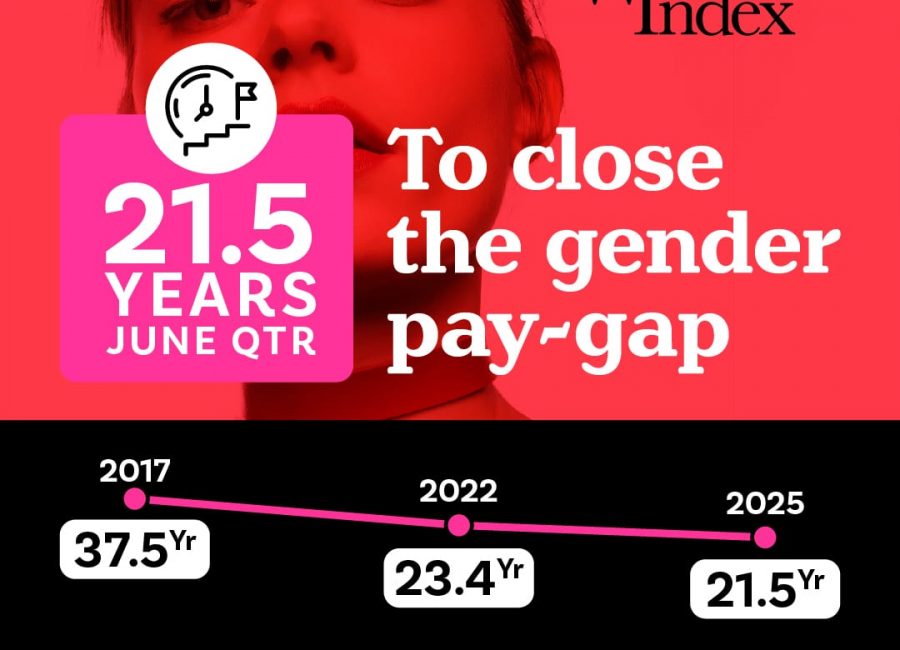Women are being urged to take greater control of their money, and channel their financial superwoman, or risk behind left behind in the land of depressing statistics.
In a Financy exclusive, a new white paper shows why many women are being left behind financially, and importantly what steps they can take to change their situation.
The paper by investment company Six Park titled ‘Becoming a Financial Superwoman – Why and how you can change your life with increased financial confidence and control’, looks at the reasons why women are lagging financially, and how they can remedy that.
Government statistics show the average Australian woman’s superannuation balance approaching retirement is just $80,000, while men typically retire with nearly double that, at $150,000.
Why? Women get paid less than men and are also more likely to work part-time or take career breaks to care for others, causing them to earn less than men over their lifetimes.
Six Park co-founder and Chief Executive Officer, Patrick Garrett, acknowledged the need for legislative changes to help level the playing field between men and women in retirement, but in the meantime, there are some key steps women can take to improve their financial situation.
“The inequality that women face financially is a critical issue and there’s little doubt policy needs to be adjusted to address the problem,” says Mr Garrett.
“Policy changes can be years in the making and, in the meantime, women are losing precious time to make up the savings gap if they aren’t being proactive about savings and investment.”
Mr Garrett says Six Park’s ambition to improve women’s financial confidence and control was heightened by the fact that research has found women make better investors than men.
“Studies show that women are often less confident than men about managing finances, yet at the same time, they have just as much if not more capacity to be successful investors.
“The key thing to remember is it’s never too late to start saving. On the flipside, remember that things won’t change if you don’t do anything.”
The Becoming a Financial Superwoman paper outlines solutions revolving around three key pillars: savings, investment, and retirement:
Savings
Get a handle on your budget: A critical first step is to work out how much spare cash you could realistically set aside each month. There are plenty of free budgeting tools online that help you track your spending, identify areas of wastage, and work out how much cashflow you’ve got left to save.
Set some goals: When you’ve worked out how much you can save, pay off any credit card debt first, then set other goals to save for. Goals help to keep you focused and motivates you to keep saving.
Save regularly and stick to it: Whether you put $20 a week into an investment account or make voluntary contributions to your superannuation, it’s important to have a regular savings pattern and stick to it. Consider a direct debit, otherwise it may fall by the wayside when you get busy.
Investment
Diversify: Every investment carries risks but if your capital is spread across a variety of asset classes—such as Australian and international shares, listed property, residential/investment property, infrastructure assets, and bonds—the negative performance of some investments will tend to be neutralised by the positive performance of others, and over the longer term, the overall portfolio will yield higher and less volatile returns.
Consider Exchange Traded Funds (ETFs) as a low-fee way to diversify: Keeping fees low should be a major focus for every investor. Over time, small differences in fees can have a big influence on returns. One way to minimise fees is to invest via exchange-traded funds (ETFs) – listed managed funds that track a market index or sector. ETFs can provide instant access to a diverse range of securities and their fees tend to be lower than many non-listed managed funds because they take a “passive” approach to investing and don’t try to outperform the market.
Superannuation
Consolidate: Do you have more than one superannuation account after changing jobs? If so, it may pay to roll the funds into one. This can minimise fees and make your super easier to track. Also do a search for lost super by visiting the Australian Taxation Office website.
Consider voluntary contributions: To the extent you have capacity and no imperative to use the funds elsewhere, consider making voluntary contributions to your superannuation.
Plan for career breaks: Consider making extra superannuation payments before you go on maternity leave, or make contributions from any paid parental leave you receive. Spouses can also make contributions on your behalf when you’re taking work breaks to look after family.












